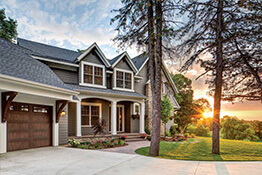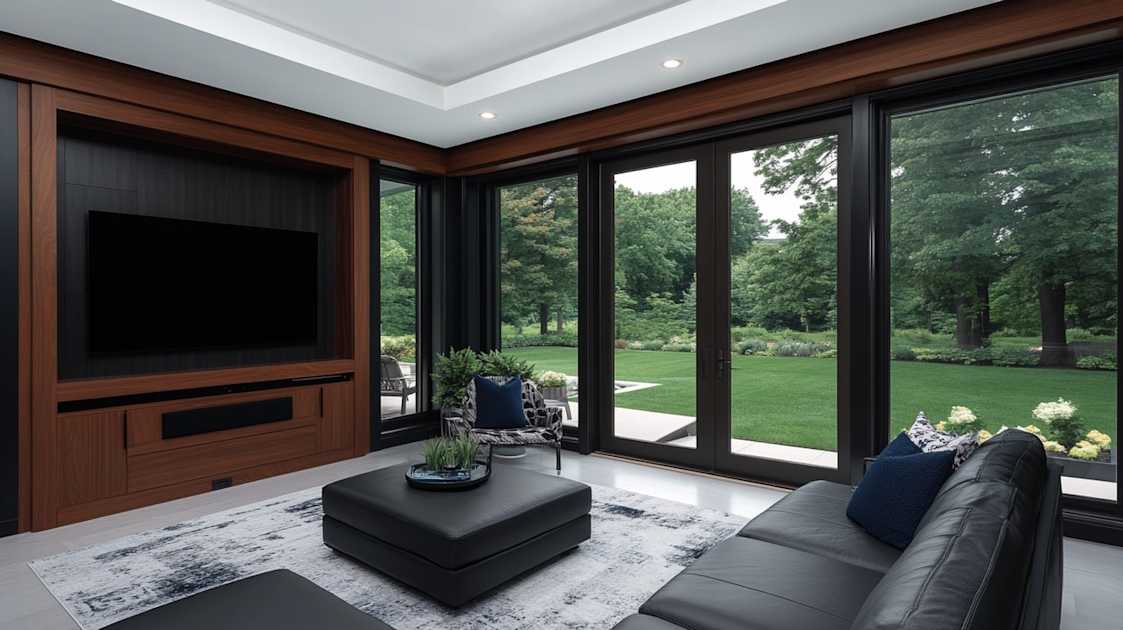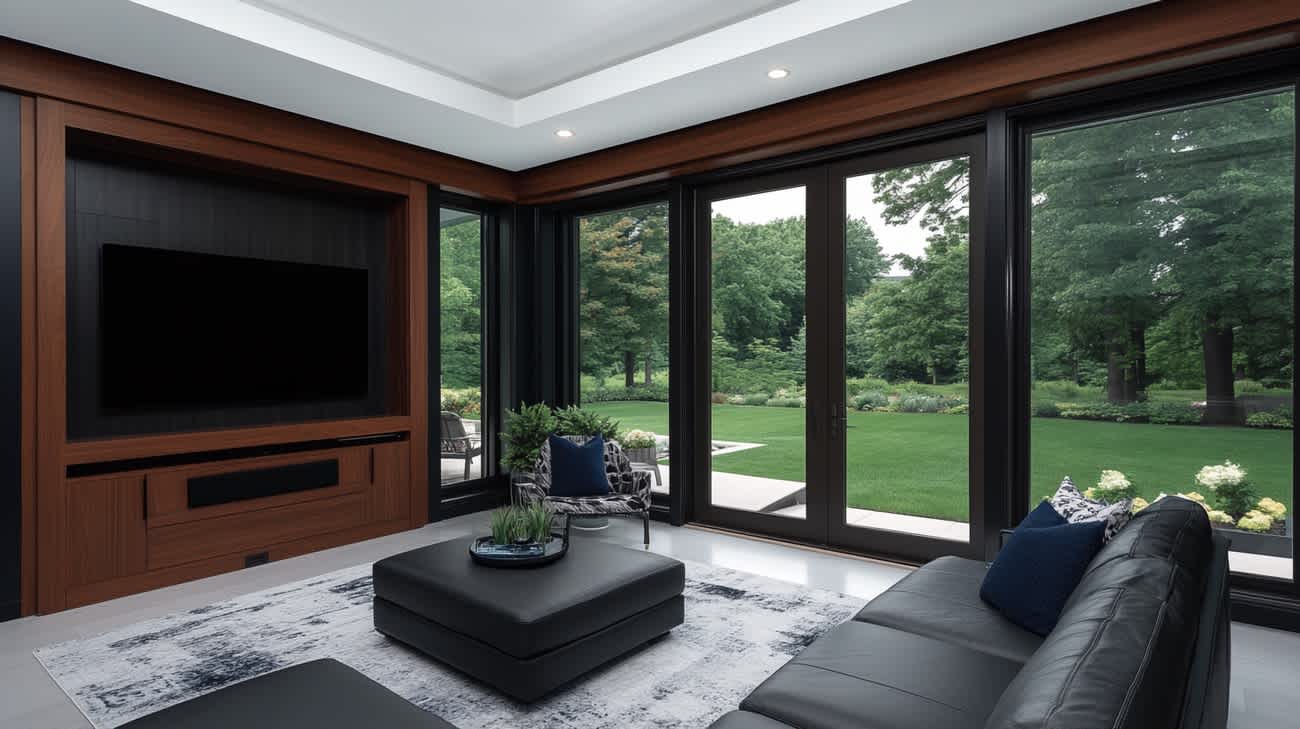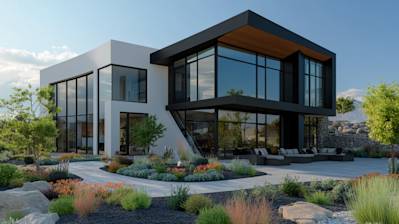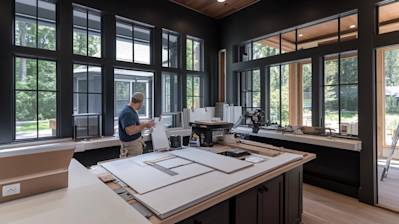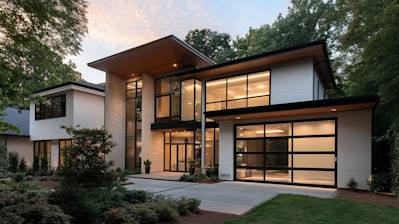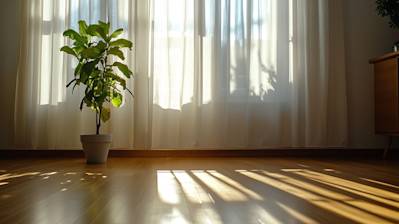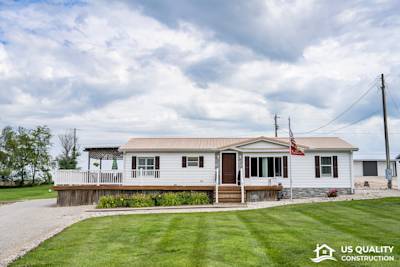Known for their aesthetic appeal and functional benefits, floor to ceiling windows can transform any room into a luxurious, visually pleasing space. This design element, characterized by towering glass panes that stretch from the floor right up to the roof, lets the outdoors in, and has become a popular choice in contemporary home and office designs.
In this article, we are going to take a deep dive into floor to ceiling windows, examining their importance, benefits, design considerations, and the types available to help you make an informed decision.
What Are Floor to Ceiling Windows?
Floor to ceiling windows, also known as picture windows, are large, unobstructed windows that span from the floor to the ceiling of a room. As the name suggests, these windows provide a clear, panoramic view of the outdoor landscape, creating a seamless connection between your living space and the beautiful vistas outside.
These grand window installations are a versatile design option, accommodating various architectural designs - from modern to classic. Let's look at why these windows are an amazing feature to include in your home or office design.
Rich Sensory Experience
Probably the most striking feature of floor to ceiling windows is the richness and breadth of view they afford. Through these windows, you can experience the ever-changing nuances of the natural world - from the gentle dance of leaves in the wind to the glittering play of sunlight on water. It is an ideal way to bring nature into your home.
Flooded with Natural Light
With floor to ceiling windows, rooms are naturally bright, promoting an uplifted and positive atmosphere. This surge of natural light can:
- Aid in improving mood and cognitive function
- Boost productivity in offices
- Reduce energy consumption by minimizing the need for artificial lighting
Versatile Design Element
Floor to ceiling windows are versatile. Their clean, streamlined appearance gives way for them to complement various design styles. Whether your taste is modern minimalist, chic industrial, or classic contemporary, these windows are perfect for creating a focal point and enhancing the overall aesthetics of the room.
Floor to Ceiling Windows Styles to Consider
When it comes to floor to ceiling windows, there are several styles at your disposal. Let's explore some popular options:
Fixed Windows
Fixed windows do not open and are meant solely for letting in light and enhancing the view. They are most suited for rooms that require additional light, and where ventilation is not a concern.
Sliding Windows
Sliding windows provide the perfect balance between beautiful views and ventilation. They slide horizontally, allowing you to control the amount of outdoor exposure.
French Windows
French windows add a touch of classic elegance. They are designed with two sashes that swing inwards or outwards, offering clear views and ample ventilation.
Bay or Bow Windows
Bay or bow windows provide a panoramic view of the surroundings. They extend outward, adding extra space to your room.
Designing with Floor to Ceiling Windows
Designing with floor to ceiling windows may seem daunting but with the right considerations, they can become a stand-out feature in your home or office space:
- Orientation: To maximize light while maintaining energy efficiency, consider the orientation of the windows. North-facing windows can provide consistent, pleasant light, while south-facing windows may let in more direct sunlight.
- Privacy: Floor to ceiling windows are visually stunning but take into account your need for privacy. You might want to add curtains, blinds, or choose one-way glass for certain rooms.
- UV Protection: Protect your interior decor from fading by opting for windows with UV protective coating.

Frequently Asked Questions about Floor To Ceiling Windows
Do Floor to Ceiling Windows Provide Adequate Privacy?
Since floor to ceiling windows often cover the entire wall from top to bottom, they can greatly compromise the privacy of your home from outside. To enhance privacy, consider strategically positioning the windows or using window treatments like curtains, blinds, or frosted glass.
What Type of Glass is Used for Floor to Ceiling Windows?
The type of glass used in floor to ceiling windows may vary depending on the requirements of the homeowner. For safety usually tempered or laminated safety glass is recommended given its higher durability and endurance. Moreover, for higher energy efficiency, double-glazing or Low-e glass may be used.
Are Floor to Ceiling Windows More Expensive?
Yes, floor to ceiling windows tend to be more costly than traditional windows, as they require more material and special installation techniques. Added to this are the costs of designing structural support, acquiring the engineering clearances, and also considering energy-efficient glass options. Yet, the investment often pays off with the enhanced aesthetic appeal they bring to your home.
How are Floor to Ceiling Windows Installed?
Floor to ceiling windows require expert installation due to their size and weight. A professional should be employed to ensure that the window is installed correctly and safely. The installation process generally includes designing the structure, providing the necessary structural support, and correctly placing and sealing the window.
Is Planning Permission Required for Floor to Ceiling Windows?
Planning permissions for installing floor to ceiling windows could be required depending on your location. With some properties, especially in urban districts or listed buildings, you might need to acquire specific permissions before installation. It is advisable to check with local planning authorities before beginning any installations.
Can Floor to Ceiling Windows be Opened?
Floor to ceiling windows can be designed to be operable or fixed. If you want to have the ability to open your windows for ventilation, you should specify this with your architect or designer at the design stage. Note that making these windows operable could affect the window’s effect on heating and cooling the house.
How are Floor to Ceiling Windows Cleaned?
Due to their size and positioning, professional window cleaning services are usually required to clean these windows, especially for higher floors. For those reachable from the ground level, extendable window cleaning tools can be used. Some designs also feature tilt-and-turn mechanisms for safe and easy cleaning from the inside.
Can Floor to Ceiling Windows be Covered?
Yes, window treatments like blinds, curtains, or shades can be used for floor to ceiling windows. These can offer much-needed privacy and light control, especially in bedrooms and living spaces. Contemporary designs often see use of motorized blinds that can be controlled remotely for ease.

Pros of Floor to Ceiling Windows
Ample Natural Light
One of the key advantages of floor to ceiling windows is the abundance of natural light they provide. With their large surface area, these windows allow in more sunlight than traditional windows. This doesn't just create an inviting, airy atmosphere; it can also significantly reduce energy costs by minimizing the need for artificial lighting during the day.
Enhanced Aesthetic Appeal
Floor to ceiling windows offer a modern, sophisticated look that can greatly enhance the aesthetic appeal of a property. They add a unique architectural design element that can make any room feel more elegant and luxurious.
Expansive Views
Another significant benefit of floor to ceiling windows is the expansive views they offer. These windows can provide uninterrupted views of your surroundings, whether it's a bustling cityscape, a serene beach, or a beautiful garden. This can further add to the allure and value of a property.
Perception of Larger Space
Floor to ceiling windows can create the illusion of a larger room. They seamlessly connect your indoor space with the outside world, which can make any room feel more spacious and open.
Increased Property Value
Floor to ceiling windows can increase the value of your property. They are considered a premium feature and as such, properties with such windows often command higher sale prices or rental rates.
Cons of Floor to Ceiling Windows
Higher Costs
One of the major drawbacks of floor to ceiling windows is the cost. They can be significantly more expensive to install than traditional windows. Additionally, the cost of replacing these windows if they get damaged can also be high.
Increased Energy Consumption
Despite allowing in more daylight, floor to ceiling windows can also lead to increased energy consumption. They can lead to greater heat loss during the winter, and gain during the summer. This means your heating and cooling systems would need to work harder, which could lead to higher energy bills.
Greater Exposure to Sunlight
While the influx of natural light is a major plus, it can also mean increased exposure to UV rays, which can fade furniture and artwork over time. Additionally, it could make the room uncomfortably bright on very sunny days.
Less Privacy
Floor to ceiling windows can often lead to a lack of privacy, especially in densely populated areas. Even though curtains or blinds can be used, they would negate the benefits of the expansive views these windows offer.
High Maintenance
Floor to ceiling windows require more diligent cleaning and maintenance. Grime, dust, and streaks are more visible on larger windows. This, coupled with the fact that these windows are often difficult to reach, could result in higher maintenance costs.
Potential Safety Risk
Finally, floor to ceiling windows could be a safety hazard, especially in homes with children or pets. They can potentially create a risk of injury if someone were to accidentally walk or run into them.

Myths / Misconceptions about Floor-to-Ceiling Windows
Floor-to-ceiling windows are a beautiful and desirable feature in homes and businesses alike, providing unparalleled views and filling rooms with abundant natural light. However, there are many myths and misconceptions circulating about these types of windows, from practical concerns such as heating and cooling efficiency to issues of privacy. Below, we debunk some of the most commonly held misconceptions about floor-to-ceiling windows.
Myth 1: They Are Not Energy-Efficient
One common misconception is that floor-to-ceiling windows are inherently energy-inefficient. People assume that because there's more glass, it must mean a greater potential for heat loss in winter and heat gain in summer.
Fact:
Modern floor-to-ceiling windows are manufactured with advanced materials and technologies that drastically improve their energy efficiency. Many are constructed from double- or even triple-paned glass, which significantly reduces heat exchange. Moreover, most floor-to-ceiling windows are treated with low-emissivity coatings that reflect heat, further enhancing energy performance. Remember to factor in the benefit of natural light reducing the need for artificial lighting.
Myth 2: They Offer No Privacy
A second commonly held myth is that floor-to-ceiling windows compromise privacy. After all, if you can see out, surely others can see in, right?
Fact:
There are multiple ways to retain your privacy without sacrificing the views you love. One option is to install window treatments that you can close when needed. Another approach is to use specific types of glass, like frosted, tinted, or one-way mirrored glass, so you can still enjoy your windows without feeling like you're on display. Moreover, the privacy issue depends largely on the location and orientation of the building in regards to other structures and public spaces.
Myth 3: They're a Security Risk
Many people worry that having such large areas of glass might make their homes more susceptible to break-ins.
Fact:
In reality, floor-to-ceiling windows can be just as secure as any other type of window when properly installed and fitted with security features. Modern ones often use tempered or laminated glass, which is much harder to break than standard window glass. Additional security measures like window alarms and security films can also be used to increase window security.
Myth 4: They're Expensive to Install
Floor-to-ceiling windows are often perceived as being prohibitively expensive.
Fact:
While it's true that these windows can be more expensive than traditional ones, they can also add significant value to a property. Plus, thanks to improved manufacturing processes, the price of floor-to-ceiling windows is more affordable than many people think. Ultimately, the cost of installation will depend on several factors, such as the size of the windows, the type of glass used, and whether any structural modifications to the building are needed.
Myth 5: They are High-Maintenance
Some people believe that floor-to-ceiling windows require constant cleaning and maintenance to retain their clear and shiny appearance.
Fact:
Cleaning floor-to-ceiling windows can be managed with standard window cleaning tools and techniques. Indeed, they may require cleaning more frequently than standard windows due to their size, but this is largely a matter of aesthetics rather than functionality. Regarding maintenance, modern windows are designed to be highly durable and to require minimal upkeep. Additionally, many window companies offer warranties and aftercare services.
To make an informed decision about whether or not to install floor-to-ceiling windows, it's important to differentiate fact from fiction. By debunking these myths, you'll hopefully feel more empowered to make the choice that's the right fit for your home or business.
Summary
There's no doubt that floor to ceiling windows are an elegant architectural feature that can drastically transform the aesthetics of any room. Their design not only enables maximum daylight penetration, giving an uplifting and refreshing ambiance to living spaces, but also offers the occupants expansive views of the surrounding landscape. Whether you live in a city apartment or a suburban house, they can capture the beauty of your surrounding environment right from the comfort of your living room.
Having floor to ceiling windows means you have the opportunity to connect with the outdoors while still enjoying the comfort and security of being indoors. It's wonderful to wake up in the morning with the sun shining through, or gaze at the stars at night while tucked into your bed. Plus, if you've got stylish interiors, these windows are a great way of showcasing your décor to the neighborhood.
Nevertheless, it's worth noting that floor to ceiling windows do come with their own unique set of considerations. The cost of installation and maintenance, for instance, can be a huge factor. Plus, privacy can potentially be infringed, particularly in densely populated areas. To mitigate this, appropriate window treatments like blinds or curtains might be necessary. But, all things considered, they have the potential to add incredible value and style to your home, and the benefits they can bring well outweigh the drawbacks.
About US Quality Construction
US Quality Construction is Kansas City, Missouri's premier building and construction company. We're passionate about providing top-notch construction solutions to all our clients, so they can realize their architectural dreams. Built on a foundation of hard work, dedication, and superior service, our team of professionals strives consistently to exceed expectations. With years of hands-on experience in the industry - be it residential or commercial construction - we are your credible partner in creating high-quality, sustainable, and visually appealing structures. We're more than just a construction company, we're a committed member of the Kansas City community, helping to build our city one project at a time.
Tags: architecture, natural light, modern design,
